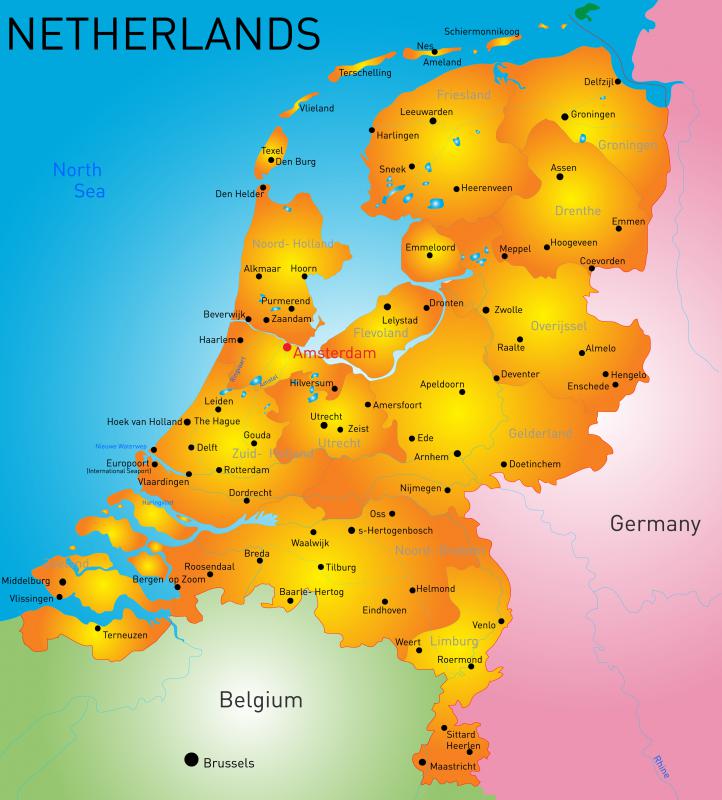At WiseGEEK, we're committed to delivering accurate, trustworthy information. Our expert-authored content is rigorously fact-checked and sourced from credible authorities. Discover how we uphold the highest standards in providing you with reliable knowledge.
What Should I Know About Indonesia?
Indonesia is an enormous archipelagic nation in Asia. It covers 735,400 square miles (1,920,000 sq. km), making it nearly three times the size of Texas. It shares islands with East Timor, Malaysia, and Papua New Guinea.
Early ancestors of modern humans, Homo erectus, first began settling some of the islands of Indonesia anywhere from two million to 500,000 years ago. About ten thousand years ago these first ancestors went extinct, and the islands remained uninhabited for a time. Then, around 2000 BCE, the first Austronesians began to settle the islands, laying the groundwork for most of the modern population.

The first kingdoms in Indonesia, specifically Java, began to form sometime in the 1st or 2nd centuries. Many different kingdoms and empires would follow, some controlling a mere handful of the many islands of what is now Indonesia, some controlling vast swaths of land. One important early empire was the Srivijaya Empire, which formed on the island of Sumatra and dominated many of the islands and parts of the Malay Peninsula from about the 7th century to the beginning of the 15th century.

Islam began to spread in Indonesia by the 13th century, and eventually it became the dominant religion, driving out Hindi throughout the islands, with the exception of the island of Bali. The 15th century saw the rise of the Islamic Sultanate of Malacca through the Malay peninsula and the nearby islands, and the Sultanate of Mataram in Java played an important role in the spread of Islamic culture by conquering many of the islands and expanding his Sultanate.

The Europeans began to vie for control of the spice trade in Indonesia beginning in earnest at the end of the 16th century. The Portuguese, who had already begun trading in the early 16th century, began settling and conquering by the end of the century. They laid the groundwork for the Dutch, who arrived in Indonesia with better weapons and tactics, and set about to systematically conquer most of the archipelago. With their base in Java, the Dutch formed the Dutch East India Company, which would quickly become a source of great wealth for the Netherlands.

A Nationalist movement began in Indonesia at the beginning of the 20th century, seeking to end centuries of Dutch dominance. By the end of World War I the Dutch had clamped down hard on these Nationalist movements, attempting to quell any chance of an uprising. The outbreak of World War II effectively severed Dutch control of Indonesia, however, when the Netherlands were occupied by the Nazis. The Indonesian Nationalist movement tried to turn this into independence, and factions of this movement contacted the Japanese, asking for their assistance. The Japanese agreed to support Indonesian independence in return for trade, and when the Japanese eventually surrendered, the leader of the Nationalist faction, Sukarno, declared independence anyway. The Dutch tried to reclaim Indonesia, but after four years of fighting were eventually forced to recognize its independent status.

The country began its independence with a system of parliamentary democracy, which lasted until 1957. At this point, Sukarno, now president, shifted the focus towards a new type of democracy that blended communism, nationalism, and religion into what was coined Guided Democracy. This period lasted until 1965, and was characterized by increasingly authoritarian leadership by Sukarno and a growing reliance on Communist nations such as China and the Soviet Union.

In 1965, following a failed coup, a massive anti-Communist backlash occurred, in which as many as one million people were killed. President Suharto took over, leading the country until he resigned in 1998. The country began to rebuild during this period from the horrific economic condition it found itself in, and was slowly on its way to recovery when the East Asian Crisis hit. Indonesia continues to struggle with its economic position, and protests continue to push the country towards more democratic reforms, holding relatively open elections in 2006.
It can be difficult to get one’s head around Indonesia. This nation is home to more than 234 million people, spread out across over 17,000 distinct islands. Although predominantly Islamic, there are entire regions where Christianity, Hinduism, or various native religions are dominant. Travel to some of the more remote islands can be a nightmare, and the security situation in places can be absolutely terrifying. Terrorism is a constant specter to most travelers, with some high profile bombings targeting Western tourists still fresh in people’s memories.
Yet with all of these problems, Indonesia remains one of the most lauded tourist destinations on the planet. The nation is a virtual world unto itself, and offers a lifetime of experiences. One of the most popular destinations is the large island of Java, where the capital lies, and where one can explore various archaeological remains of cities that once were the centers of mighty empires. The jewel in Indonesia’s crown is the island of Bali, with its picturesque scenery, pods of dolphins one can swim with, amazingly colorful and beautiful culture and crafts, and kind and welcoming people. The nearby island of Lombok is also well-regarded, offering much of the beauty of Bali, but without any of the hordes of tourists. Wherever one chooses to look, these islands always have something to amaze.
The capital city of Jakarta has flights arriving daily from most international hubs around the world, and the airport at Denpasar on Bali also receives international flights daily from many airports. Between the islands airlines regularly operate, although for the some of the smaller islands it can be difficult to find a flight. Ferries and ships also travel between the islands, ranging from three day trips to short hour-long trips in a speedboat.
AS FEATURED ON:
AS FEATURED ON:
















Discuss this Article
Post your comments